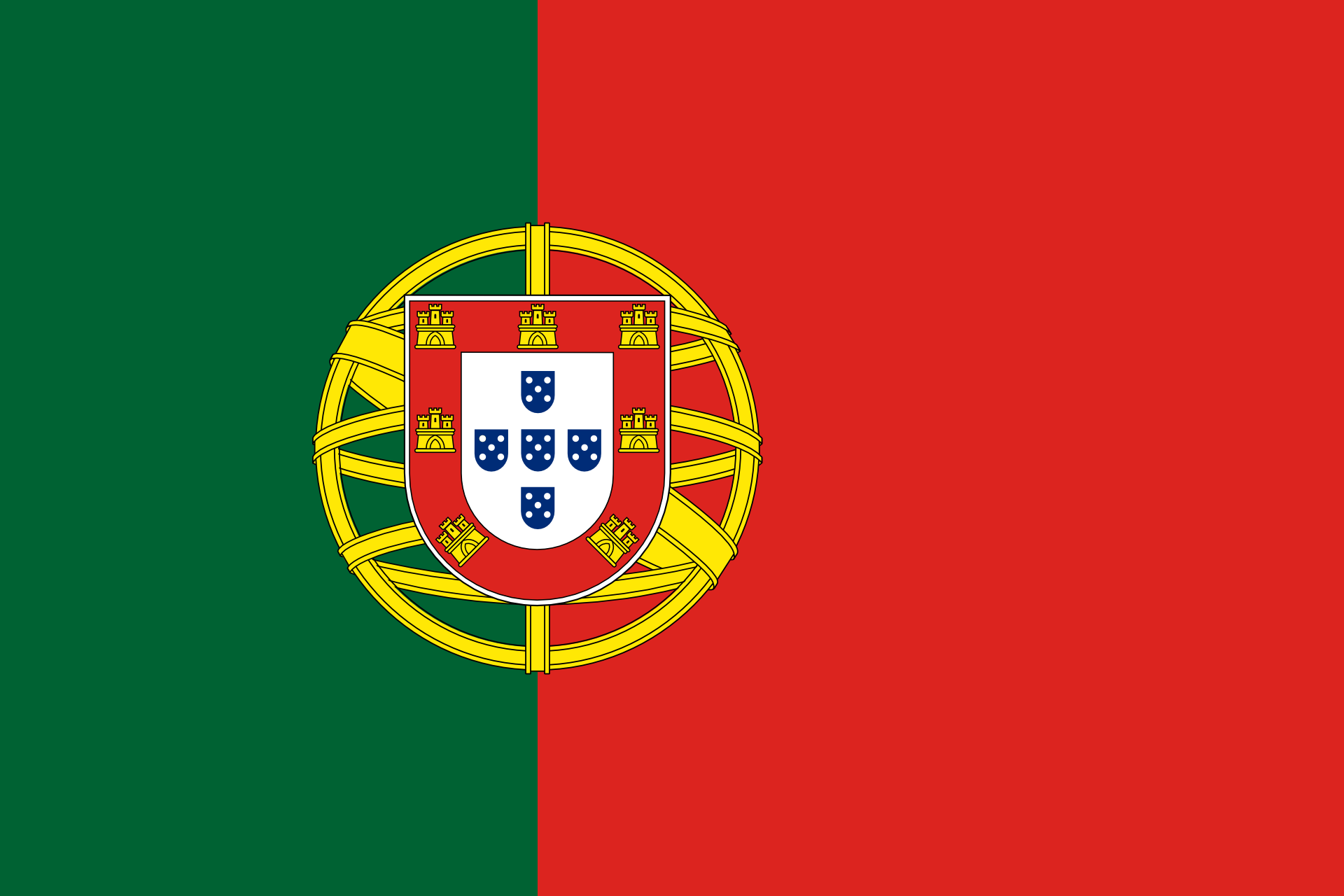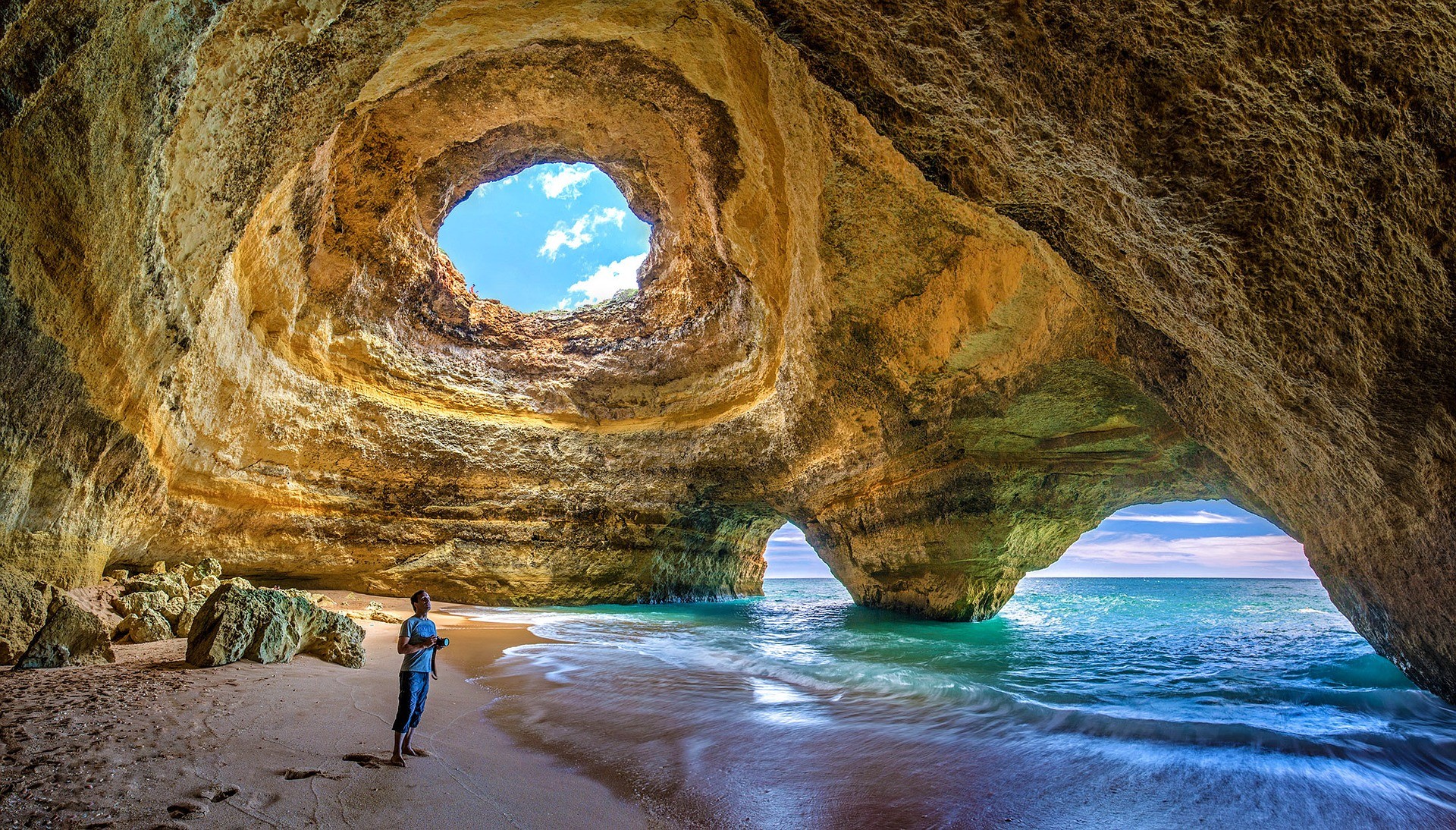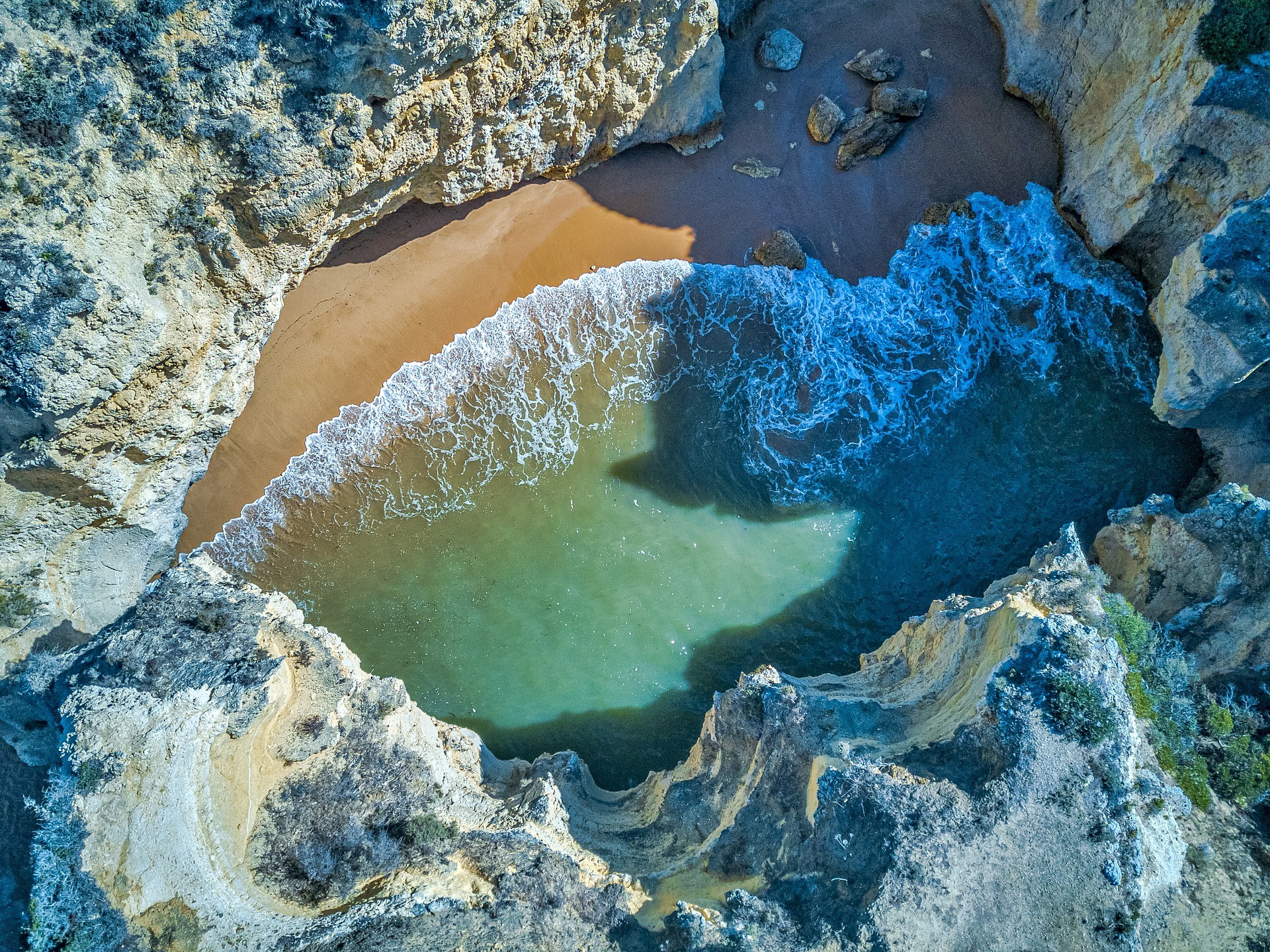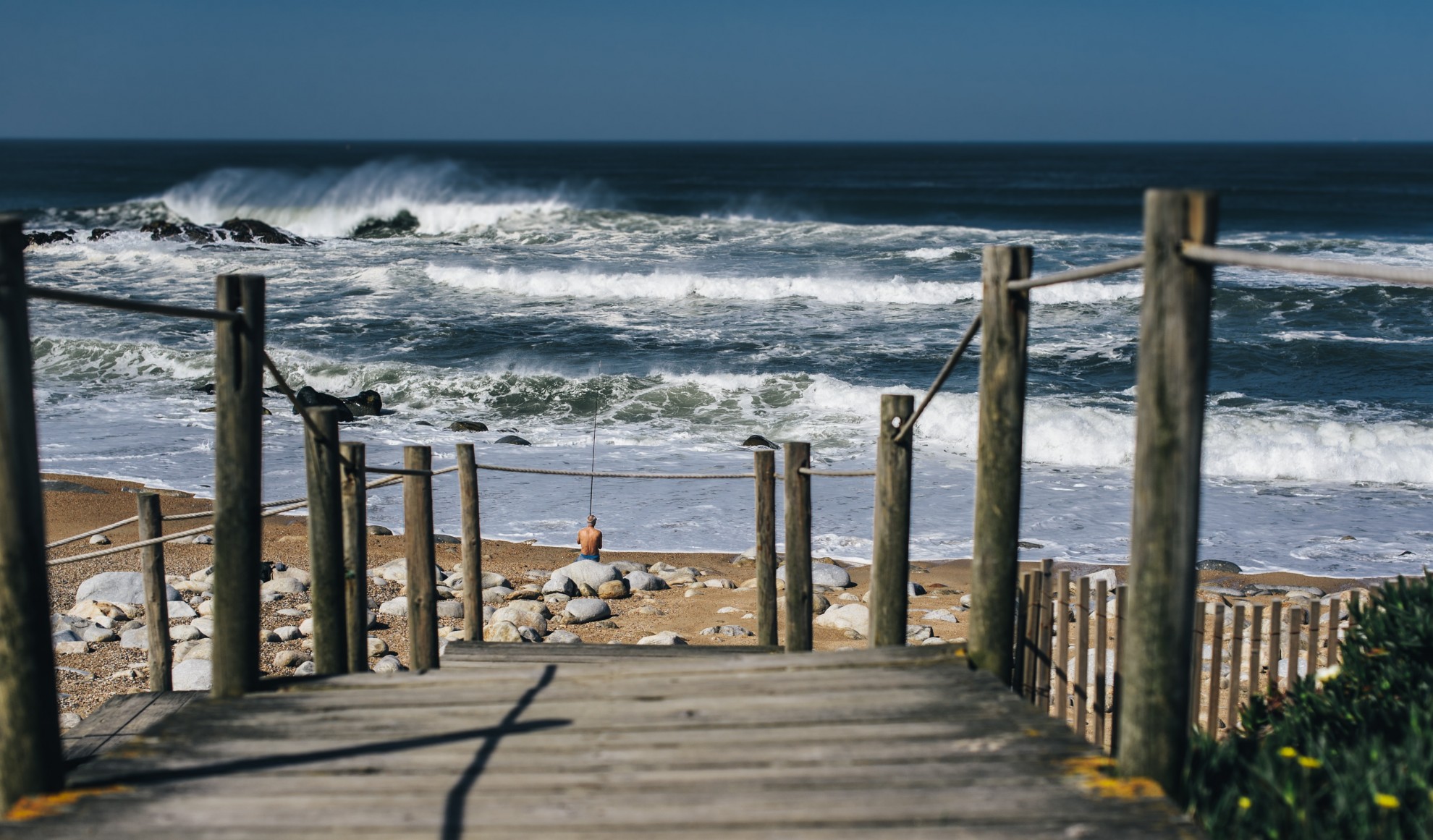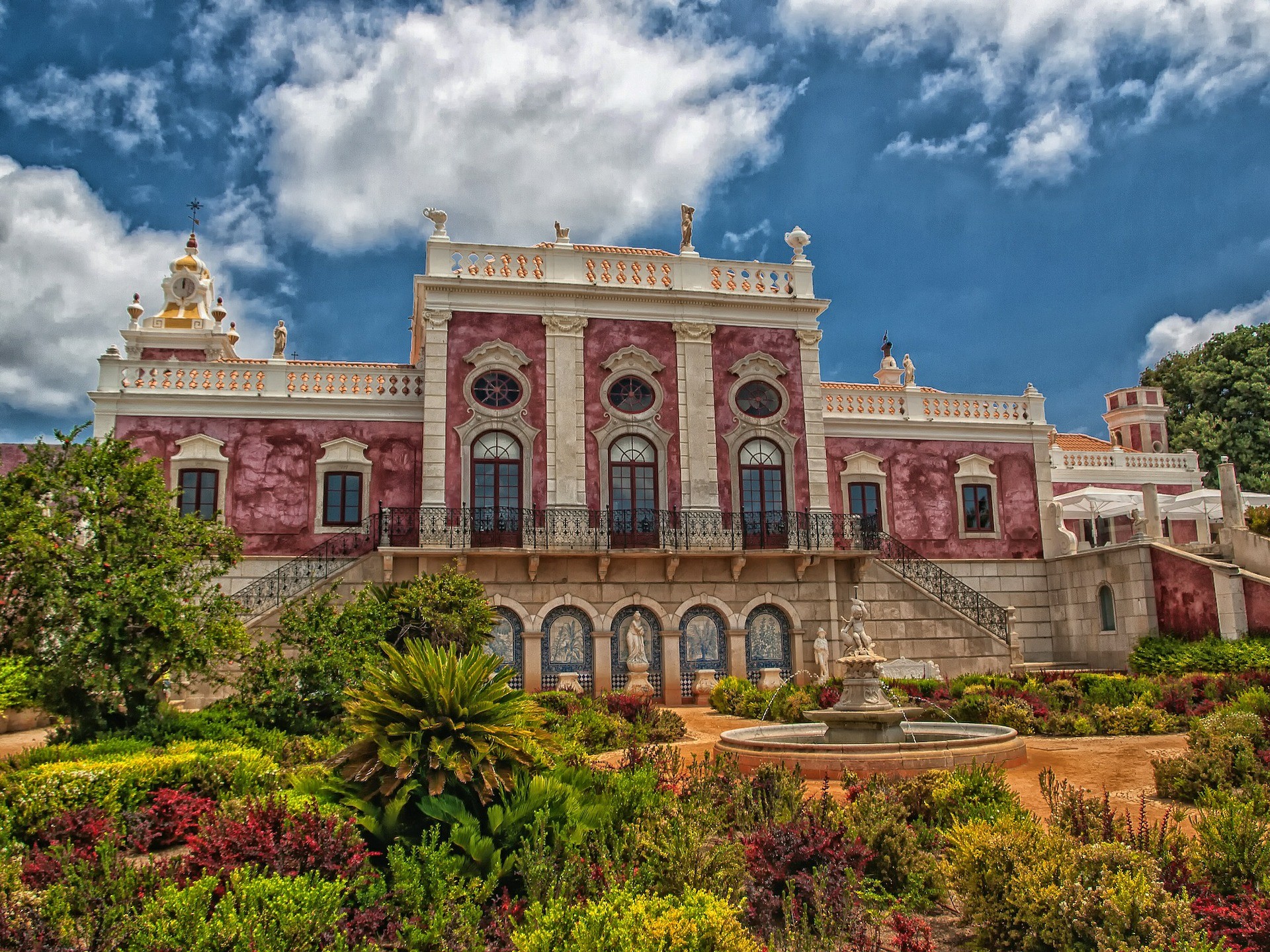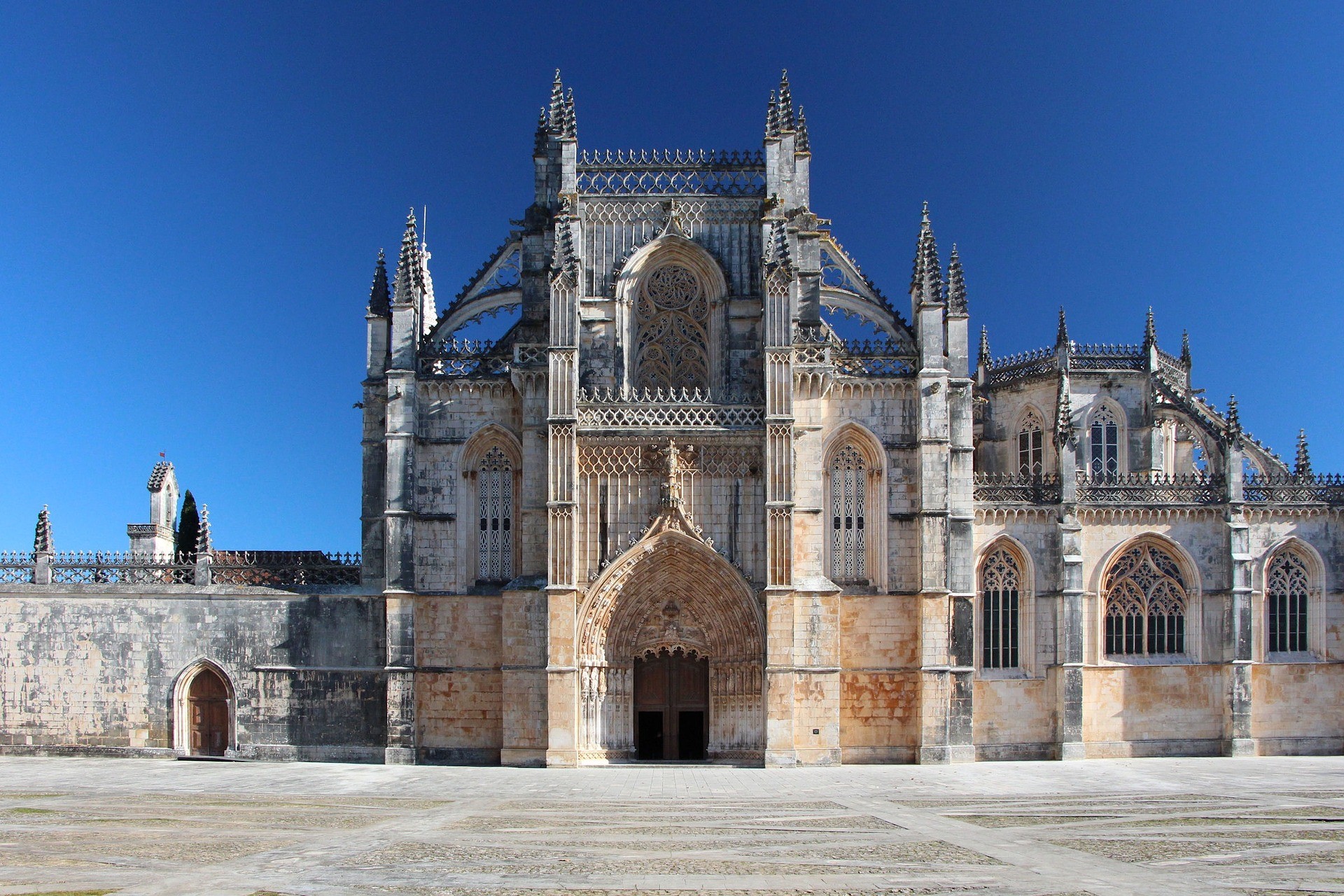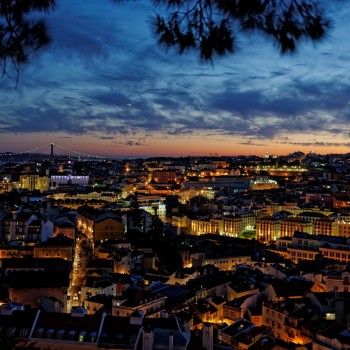Portugal
Portugal
Capital city description
Lisbon, the largest city and capital of Portugal, is also one of the most visited European capitals. Lisbon is Portugal's commercial, tourism, administrative and cultural center, home to the country's largest seaport, the bulk of multinational headquarters, and multiple industries as an economic center. Being the country's administrative center, Lisbon is the seat of Portugal's Government and home to the President's residence.
The city capital is also a transportation center with a network of highways, motorways, bridges, metro systems, and the Lisbon Portela Airport, the leading international airport. Lisbon is renowned for its cuisine, music, bullfighting, fascinating streets, historic landmarks, beaches, and nightlife as a tourist destination.
Climate
Portugal has a temperate climate; the Atlantic Ocean influences it. In the north, the climate is cool and rainy, while moving south, it becomes gradually warmer and sunnier; in the far south, the region of Algarve has a dry and sunny microclimate.
In July and August, summer can get very hot, with several days reaching over 90 degrees F (32 degrees C).
Spring: March to May
Summer: June to August
Autumn: September to November
Winter: December to February
Languages spoken
Portuguese is an official and widely spoken language in Portugal. At the same time, English is the second most commonly spoken language in Portugal.
Fun/Fascinating Facts
- Portugal holds one of the most advanced ATM systems in the world. More than 60 operations are possible through the system, including donations for charities, phone credit top-ups, and buying concert tickets.
- Portugal is regarded as one of the best surfing destinations in Europe, as its wide variety of waves and swells size offer ideal surfing spots for surfers of every ability. Waves typically range in size from 6 ft to 15 ft.
- Portugal houses one of the oldest cities in Europe. Founded by the Phoenicians around 1200 BC, Lisbon is older than almost all European capitals. Only Athens was founded earlier than Lisbon. 4 centuries.
- Portugal is also known as the “country of tiles.” The Portuguese have been decorating their walls and floors with tiles for a long time.
- There are 15 UNESCO World Heritage Sites in Portugal. Each year more than 13 million tourists visit the country.
Unique Customs/Traditions
- Portuguese are family-oriented. Sundays are family days when everyone visits their parents and grandparents. Loyalty to the family comes before any other social relationship or business.
- Traje Minhoto is a traditional women's clothing of Portugal, an outfit originated from the Minho region, in the North of Portugal, worn by women on some municipal holidays. It's reminiscent of peasant wear, with flowy white blouses and a long rounded skirt, yet elevated, with floral embroideries and scarlet red.
- The Portuguese traditions are also marked by music—one of Portugal's most distinct musical genres and unique global level. Fado music is a Portuguese singing often associated with pubs, cafés, and restaurants. It is a Portuguese musical style characterized by suffering and melancholy.
- The most celebrated Portuguese tradition is the Santos Populares celebrations. The Santos Populares celebrations pace Portugal's daily routine and nightlife during June! Throughout the country, these celebrations are known as Santo António, São João, and São Pedro happen during the most entertaining month of the year, which is June! Each region has its saint, so each area commemorates it at a different time of the month.
Popular universities
| Name | Description | |
|---|---|---|
| University of Porto | The University of Porto is a non-profit public higher education institution located in the urban setting of the medium city of Porto. The University of Porto is currently one of the most prestigious Higher Education Institutions in Europe. Founded in 1911, it is the second-largest Portuguese university for students. The university comprises 14 faculties and a business school; the University of Porto provides an exceptional variety of courses, covering the whole range of study areas and all levels of higher education. | |
| University of Aveiro | Established in 1973, the University of Aveiro is one of the oldest and most prestigious private catholic universities in Aveiro, Portugal. The University is known for its Programs in Science and Technology. The University offers Bachelor's, Master and Doctorate degrees in Law, Foreign Languages, IT, Bioinformatics, Industrial Engineering, Communication, Economics, Social Sciences, Mathematics, Literature, Sciences, and many others. The University of Aveiro comprises four major Schools and six Faculties. | |
| NOVA University Lisbon | NOVA University Lisbon is a Portuguese public university located in Campolide, Lisbon. NOVA University Lisbon was founded in 1973 and is the newest public university in the Lisbon metropolitan area, with teaching units in Lisbon, Almada, Oeiras, and Cascais. Lisbon offers an authentic European experience: art galleries, cafes, museums, libraries, multiculturalism, and a unique architecture face. | |
| University of Coimbra | University of Coimbra or Universidade de Coimbra (UC) is a public higher education institution in Portugal. The University of Coimbra is best in Arts and Humanities, Engineering and Technology, Life Sciences and Medicine, Social Sciences and Management. The University of Coimbra is the oldest in Portugal as it was founded almost 700 years ago. | |
| University of Minho | Founded in 1973, the University of Minho or Universidade do Minho (UMinho) is a public higher education institution located in Braga, Portugal. It offers courses and programs leading to officially recognized higher education degrees such as bachelor's degrees, master's degrees, doctorate degrees in several areas of study. | |
| ISCTE University Institute of Lisbon | The ISCTE University Institute of Lisbon is a non-profit public higher education institution located in Lisbon, founded in 1972 as one of Portugal’s first modern universities, with the central aim of studying labor and social dynamics in a rapidly changing world. The university has expanded its disciplinary reach into four schools: Iscte Business School, the School of Sociology and Public Policy, the School of Technology and Architecture, and the School of Social Sciences and Humanities. | |
| Catholic University of Portugal | The Catholic University of Portugal or Universidade Católica Portuguesa (UCP) is a private nonprofit higher education institution located in the urban setting of the metropolis of Lisbon. The Catholic University of Portugal or Universidade Católica Portuguesa (UCP) offers courses and programs leading to officially recognized higher education degrees such as bachelor's degrees, master's degrees, doctorate degrees in several areas of study. This institution also has branch campuses in the following locations: Viseu, Braga, Porto. | |
Festivals & Events
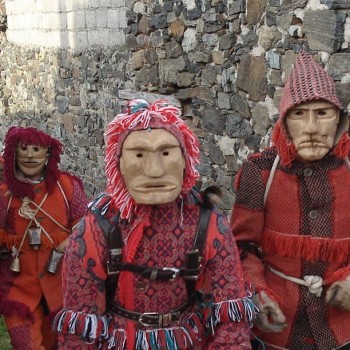
Festa dos Rapazes
Date: 25th-26th December
In December, held every year in the Trás-os-Montes region of the country, the “Festa dos Rapazes” is a famous traditional Portugal festival that is usually done to celebrate young men’s transition to adulthood.
Festa dos Rapazes is celebrated for two days and involves young men, usually 16-year-olds, wearing masks and dancing through the community to mark their transition to adulthood.

, Rock in Rio Lisboa
Date: June
One of the largest rock festivals in Europe, Rock in Rio Lisboa, is held in Portugal. It is modeled after the Brazilian musical festival Rock in Rio, and it’s the best place to enjoy rock festivities in the country.
This event takes place for over five days in Lisbon’s Bela Vista Park. It features several top international rock artists, bands, other musicians, and talented DJs.
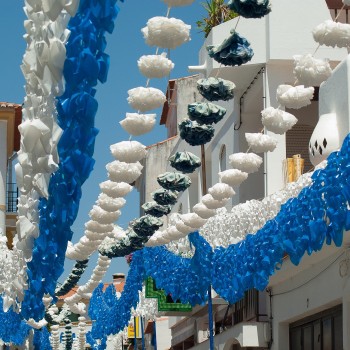
Festa de São João
Date: 23th-24th June
Held in June, Festa de São João, is an event tribute to St. John. It is one of the famous festivals in Porto that features a wide range of traditional music performances by renowned artists, musical dances, and many other exciting events.
Other conventional attractions of the festival include jumping over bonfires, eating barbecued sardines, Caldo Verde, and meat, drinking wine, and releasing illuminated flame-propelled balloons over Porto's summer sky. The fireworks mark the end of the official festivities.
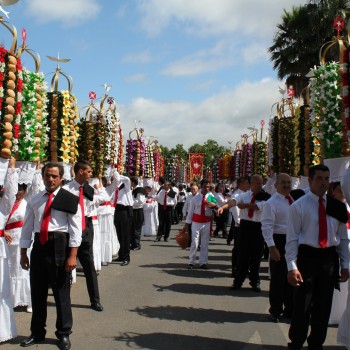
Festa dos Tabuleiros
Date: July (every four years)
Festa dos Tabuleiros, or the Festival of the Trays, is a unique celebration featuring drinking, music, dancing, and fireworks. It is held in July every four years on the streets of Tomar. Tomar comes alive with decorations, music, parades, and food for one whole week during the events.
The city’s center is adorned with colorful blankets spread over balconies and handmade paper flowers. Participants can make the decorations and cheer on the parading women. It is one of the most widespread festivals in the region.
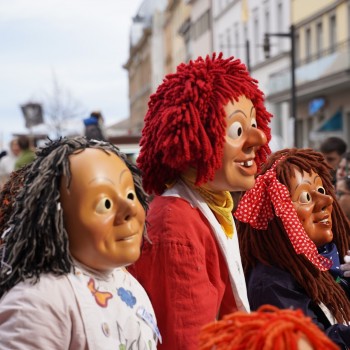
Carnaval, Lisbon
Date: February or March
Portugal celebrates the famous Carnaval. It is a fantastic celebration of the boating culture and lifestyle of the people. It is celebrated in different communities; however, the most lavish is done in Lisbon, Portugal.
Lisbon’s streets are filled with festive activities, including theater performances, street acts, costumes, masks, and floats during the celebration.

Obidos International Chocolate Festival
Date: March to May
Obidos International Chocolate Festival is one of the most famous and sweetest festivals in Europe that celebrates different kinds of delectable chocolate in the country. In this festival, you can find all types of art in chocolate, either in sculptures duly worked by sculptors who are experts in this raw material, or in original tablets, unusual bonbons, or in drinks and foods that reinvent this product in multiple ways.
Many professionals show their skills in sessions where originality or creativity prevails. Several activities related to the catering, pastry, confectionery, and bonbons are high points in this event, which is proud to be the most notable in its area.
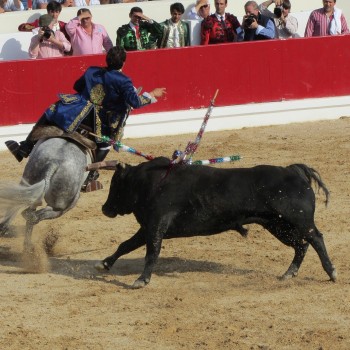
Feira de Outubro, Vila Franca de Xira
Date: October
Feira de Outubro or October Fair is an event that offers fun, excitement, art, and sports held annually. The event takes place in Vila Franca de Xira and features a series of thrilling shows and events.
There are several activities to enjoy at this fair. The festival hosts cooking shows, art displays, and handicraft work on sale, and at the same time, visitors will also see and enjoy places to shop for clothes, ceramic work, wood carvings, etc. The highlight of this unique fair is the bull-running and bull-fighting event.
Attractions / Top Sights
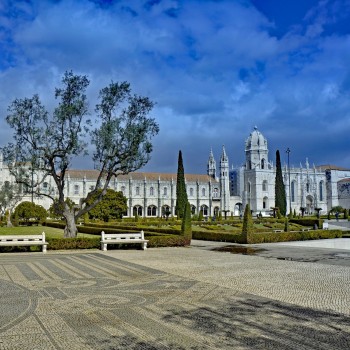
Monastery of Jerónimos
When to visit: May to September
Built in the 16th-century, the Monastery of Jerónimos is listed as a National Monument and inscribed on UNESCO's World Heritage List (1983). It is located in Lisbon, overlooking the Tagus River. The monastery is one of the most notable examples of the Portuguese Late Gothic Manueline style of architecture in Lisbon.
On the monastery's imposing façade, extending for about three hundred meters, stands the Church's richly decorated South Portal boasting images of Portugal's Patron Saint, St. Michael the Archangel (on top and Our Lady of Belém or Our Lady of Reis (at the center).
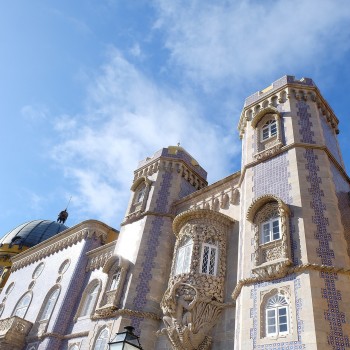
National Palace of Pena
The National Palace of Pena is one of the perfect examples of 19th century Romanticism globally, standing on the top of a hill in the Sintra Mountains above the town of Sintra. It can be easily seen from Lisbon and much of its metropolitan area on a clear day. The impressive structure is combined with Neo-Gothic, Neo-Manueline, Neo-Islamic, and Neo-Renaissance. The interiors of the Pena Palace were adapted to serve as the royal family's summer residence. It has impressive stuccos, painted walls in trompe-l'œil, and various revetments in tile from the 19th century, forming part of the numerous royal collections. The stunning palace is a UNESCO World Heritage Site and one of the Seven Wonders of Portugal.
Way back then, the palace was started as a chapel to Our Lady of Pena during the Middle Ages. Presently, the Portuguese Republic and other government officials use the palace for state occasions.
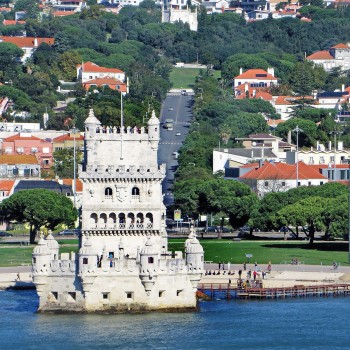
Belem Tower
When to visit: May to September
Also known as the Tower of St. Vincent, Belem Tower sits on the Tagus River in Lisbon, the capital of Portugal. The tower was erected to serve both as a gateway to the city of Lisbon and to defend against invasions and attacks from the Tagus.
Built in the Age of Discovery, the four-story limestone tower has a bastion connected; the defense had space for 17 cannons that could fire long-range shots. The building has been a UNESCO World Heritage Site since 1883. The tower is also famous for its picturesque view and breathtaking sunsets, making it one of the famous sights of Lisbon.
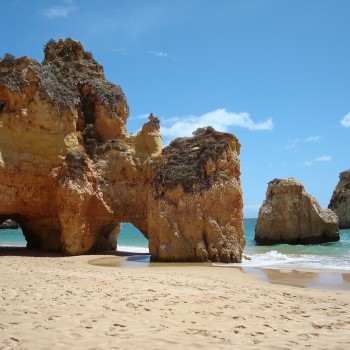
Praia da Marinha
When to visit: April to October
One of the most stunning beaches in Portugal, Praia da Marinha, located in the Atlantic coast region of Algarve, the beach is flanked by gorgeous blue waters on one side and sandy beaches and high cliffs on the other landside.
The beach's clear waters make it a good place for snorkeling. In 1998, it was awarded the distinguished "Golden Beach" award by the Portuguese Ministry of the Environment because of its outstanding natural qualities. Many parts of this stunningly beautiful beach are often used extensively as an image in travel brochures.
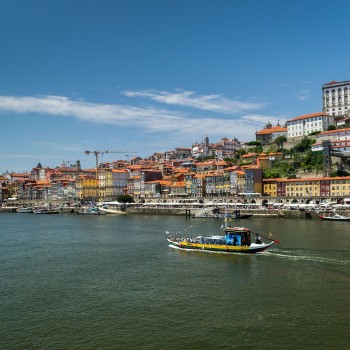
Cais da Ribeira
When to visit: May to October
A captivating, picturesque district in Porto, Cais da Ribeira, sometimes referred to as “the soul of Porto.” It’s made up of medieval streets on a square by the Douro River. Medieval buildings are surrounded by bars, cafes, and restaurants, making Ribeira a famous place for eating and drinking.
The beautiful and colorful place is mainly famous on feast days when locals and tourists flock to see fireworks. There’s a bronze cube in the middle of the square. Nearby is the house where Prince Henry the Navigator was born in 1394.
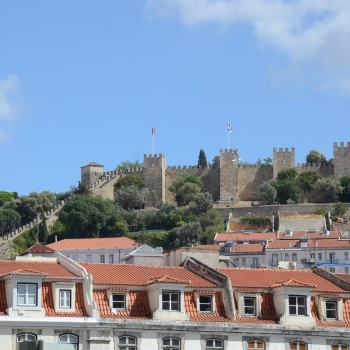
São Jorge Castle
When to visit: May to September
The São Jorge Castle is one of the most fantastic tourist attractions in Lisbon as it can be seen from all over the city. It dates back to Roman times, though the Moors rebuilt the fortifications in the 10th century. In the Second Crusade, the castle was freed from Moorish rule in 1147 during the Siege of Lisbon.
The castle complex consists of eleven towers, some ancillary buildings (including the ruins of the royal palace), gardens, and a large terraced square. Today the castle crowns the city as the prominent landmark of ancient Lisbon and offers a breathtaking view from its walls and pine-shaded terraces. The top of the castle gives you the best views of the east of Lisbon.
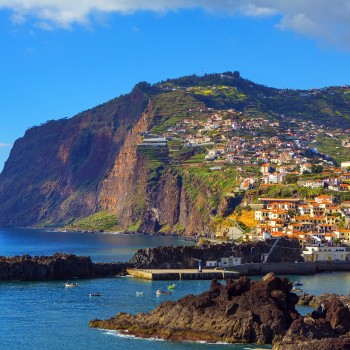
Cabo Girão
When to visit: May to September
Located on the southern coast of Madeira, Cabo Girão, a 570 meters (1,870 feet) sea cliff, often referred to as the highest sea cliff in Europe. It is a famous lookout point, with less than two thousand visitors a day. The location is also a popular starting point for hikers.
The Cape is well-known for the Chapel of Nossa Senhora da Fátima, constructed in 1974 to replace a much smaller chapel built in 1931.















